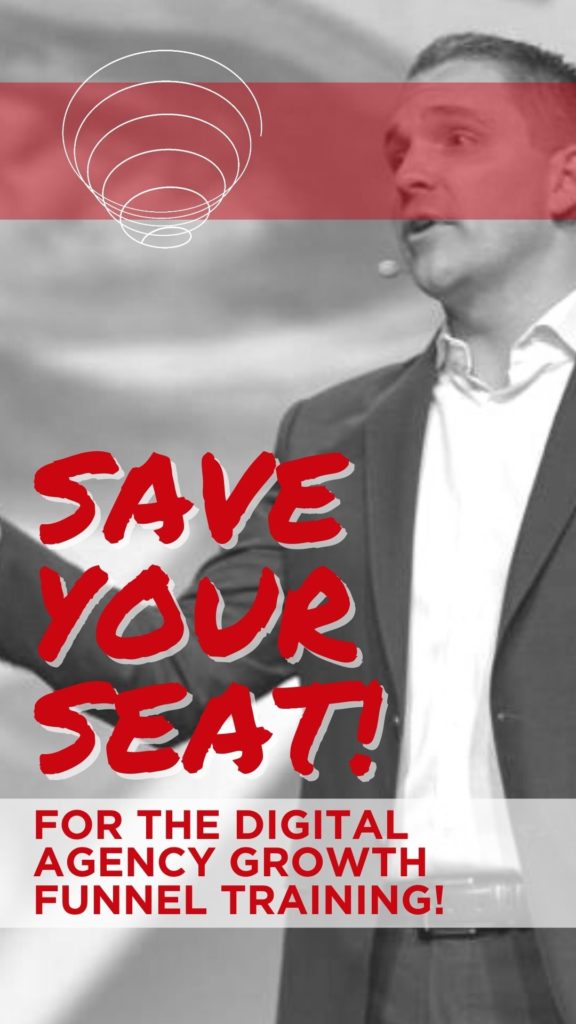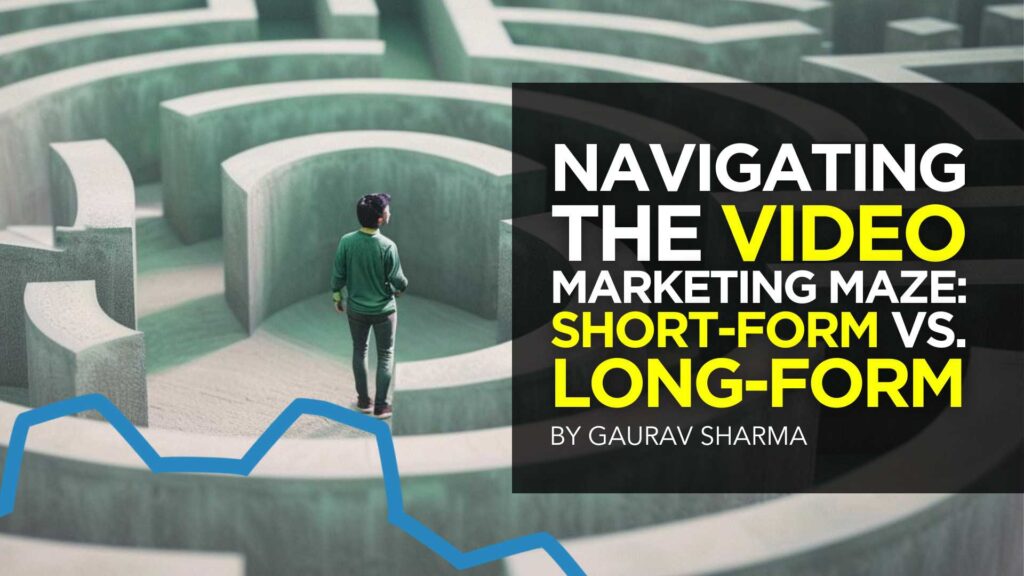

In my last article, we talked about whether or not Google Ads was the right move for your ecommerce business.
Now, if Google Ads is indeed in the cards for your store (or you have successfully run Google Ads already), this article is going to walk you through the prerequisites you need before you can hit the ground running.
Ecommerce Business Planning:
Must-Haves Before Building a Google Ads Campaign
You are hereby (lovingly) forbidden from building a Google Ads campaign until you have the following six items:
- Reasonable Monthly Spend
- 90 Days to Prove Concept
- An Ecommerce Enabled Website With a Product Feed
- Enough Margins to Support a Traffic Campaign
- Unique Selling Proposition
- No One-Off Products
Let’s explain:
- Reasonable Monthly Spend
Think of your monthly budget early on as an investment.
You are buying data you need to understand what works in your campaign, what doesn’t, and where to make changes—in a reasonable amount of time.
With that investment, Google will start to build an audience specifically for you that you will capitalize on later. And it will be worth it! You *must* have enough monthly ad spend to accumulate enough accurate data for testing and optimizing down the road.
For context, at Solutions 8, we won’t take a client whose budget is under $2000/month.
Budget under $2000 per month? Maybe you want to hold off until it’s more feasible.
Google is a learning algorithm. The first three months are going to be the most “painful” part of your campaigns. Which brings us to our next requirement:
- 90 Days to Prove Concept
It bears repeating that Google is a learning machine. And learning takes time.
In fact, we’re asking Google to do some pretty spectacular behavioral analysis.
After you set up your Smart Shopping campaign, Google learns:
- When customers interact with your ads
- How many times users click on your ads
- What channel those ads are clicked
- How long it takes for the prospect to come back
- What channels they come back to
- Which other products they view
Once Google has all that data, it determines how many other customers follow through the same pattern or similar cycle.
So, for a 15-day sales cycle (meaning it took 15 days from when a customer first clicked your ad to when they made a purchase), you might have to wait a full month for sales to start coming in. Meaning it will take a full month for Google to begin to gather data for testing and optimizing.
Again, those early days are tough. But by day 90, you should have enough data to tell whether or not the campaign will work long term.
- An Ecommerce Enabled Website With a Product Feed
This one may sound obvious, but here goes:
Your ads will send prospective customers to your site. Therefore, you need an appealing, easy-to-navigate ecommerce website complete with a product feed tool.
Remember, your “product feed” is much more than a CSV file of product titles, descriptions, GTIN codes, and prices.
For ecommerce businesses, the product feed will make or break your campaign.
When it comes to ecommerce platforms, particularly ones that integrate beautifully with Google Ads, Shopify is our fave.
- Enough Margins to Support a Traffic Campaign
Running ads takes money. Can your profit margins support these campaigns?
See, you can have a 100% profit margin—but if you’re selling $2 items, your campaigns still might not be profitable.
Unless you have a higher cart value than the original price.
In other words, your products need to be priced highly enough (with the profit margin to support it); otherwise, you’ll rely on customers adding more to their cart than the single advertised product alone (i.e. more bang for your advertising buck).
- Unique Selling Proposition
The more heavily saturated your market, the harder it’s going to be to turn a profit from Google Ads. So, what makes you different?
And *ahem* being the cheapest option isn’t the answer.
Think about your favorite products: what makes them your favorite? Is it the company’s dependable return policy? The quality of the product? The materials used?
Your unique selling proposition is key for the success of your campaigns—specifically longevity and return traffic. After all, it’s six times less expensive to sell to an existing customer than a new one.
- No One-Off Products
If you have customizable products (think products that are personalized with engravings, birthstone colors, or photos), this isn’t directed at you.
But when it comes to one-offs, Google Ads will not work.
To reiterate, one-offs are products that you can only sell once (like a unique, one-of-a-kind painting).
And therein lies the problem:
When you make a sale through Google Ads, it is Google’s job to try to recreate that cycle. It’s a learning machine!
But because single products can only sell once, Google has no way to recreate that process.
So, Google uses GTINs to identify and categorize products. But when you sell a one-off product (a single GTIN), that code disappears forever (bye, bye, valuable data).
Do you produce handmade products?
Consider creating multiples of the same product-type (ceramic bowls, for example) and simply acknowledge that they might vary slightly in design due to the nature of handmade products.
Your first sale is always your most expensive in Google Ads. You don’t want every sale to be your first.
Ecommerce Business Planning: Nice-to-Haves
Now, assuming you have all six must-haves in order, here are five important—but not imperative—items to consider:
- Multiple SKUs
- Product Financing
- Strong Lifetime Value
- Lifestyle Imagery
- Existing Purchase Traffic
Let’s explain:
- Multiple SKUs
Multiple SKUs for “like” products are ideal.
Here’s what we mean:
If a customer says, I need Product A.
And you not only have Product A—but you have 10,000 versions of it (different colors or designs), your customer is much more likely to purchase more than one; thus your average cart value will increase.
- Product Financing
New product financing payment options, like Affirm and QuadPay, have made it so customers can make smaller payments over several weeks as opposed to one large payment up front.
These options have led to a big jump in purchases and cart value, particularly among higher-priced product sellers. The best part? You get paid the full amount upfront!
Add product financing options to your site if you can.
- Strong Lifetime Value
Knowing what your real-time value is per customer and how many purchases they make within a year on average allows you to set lower targets for your ROAS goal and higher targets for your CPAs. This means you can scale quickly and grow your business faster.
For example, if you have an average cart value of $100 but customers generally purchase three times over 12 months, your average cart value becomes $300.
- Lifestyle Imagery
We’ll touch on this more soon, but lifestyle imagery (i.e. images of your product “in action” and being used by real-life people) allows your customers to really visualize themselves using your product.
- Existing Purchase Traffic
If you have existing traffic (from social media or email lists, for example), Google uses this information to identify what those people look like and find matches in their own ecosystem/user base.
In other words, instead of starting from scratch, existing traffic gives Google some notes to get going.
Ecommerce Business Planning: Offer Design
Who’s your customer?
Can you describe your product to a stranger?
…Did I lose you for a minute there?
Look, this is the part where we make you backtrack a little bit (in order to launch full speed ahead).
And it’s easy for most businesses to skip this “offer design” section because they assume this box has been done and dusted for a long time.
But before spending precious dollars on advertising online, let’s make sure you can define:
- Your target audience
- How your product makes customers feel
- And what makes your unique brand stand out amongst the competition
Here’s how:
✔️ Define Your Customer Avatar
Use this worksheet to identify your customer avatar (and who is NOT your customer avatar). The questions in the worksheet help you get in the mind of the customer.
✔️ DigitalMarketer’s “Before and After Grid”
Once you’ve defined your customer avatar(s), it’s time to consider the transformation they make when purchasing your product. After all, customers don’t buy products—they buy feelings, results, and solutions.
DigitalMarketer has a phenomenal “before and after” worksheet that you can download here.
Make a copy and fill it out with your customers in mind, including:
- What your customer has (or doesn’t have) before buying your product—and what they gain once they do.
- How they feel before your product—and how they feel after
- What an average day looks like before your product—and an average day after
✔️ Brand Development
How does your company make people feel?
If marketing is what makes people buy, brand is what makes people stay–even if there are other products available.
And if you do all the things above, you’ll have the perfect foundation for a strong brand.
Next, Optimize Your Existing Products
Let’s make sure your products and offers are as value-driven as possible. There are three ways to achieve this:
- Increase Actual Value
We’re not talking about raising the price of your products here.
Instead, we’re talking about how you can get customers to buy more from you. There are several ways to achieve this:
Bundles! If you have two products that usually go together, offer a bundle for a discounted price. You increase the value the customer receives but you also increase your profitability.
Sure, the price is “discounted,” but you’re saving money on shipping and fulfillment while increasing your cart value.
Subscriptions! For consumable products (or any other products that can be purchased consistently) consider offering a subscription-based model, which ensures recurring purchases.
We have seen first-hand that some subscription models have the same cost-per-acquisition as a one-off purchase.
One-click upsell!
When a customer is checking out, offer products that can be easily added to their cart with one click.
- Increase Perceived Value
Don’t underestimate the power of descriptions and images.
Here’s the thing: online shoppers are at a disadvantage because they can’t tangibly see and feel products like they would in a physical store. However, this can be a big opportunity for you to stand out.
Give your viewer a full virtual experience of your product: describe the benefits of your products, not just the features. Show your product in action with lifestyle imagery, so users can visualize themselves using it. Explanation of the product in a clear, easy to understand way.
Perceived value is more valuable than the actual value.
The perceived value is the reason they buy.
- Fringe Benefits
Similarly, consider any additional creative ways you can add value (and perceived value) to your products. This can be in the form of additional content (think product demos, how-to videos, and tutorials), building a community around your product via social media and forum, or early access.
Ascension Models and Value Optimization
Once you start pulling in more customers and sales, here are a few ways to optimize your growth:
✔️ Never stop selling
It has been proven (with science!) that humans are in a different state of mind when they make a purchase than when they evaluate whether they want to purchase.
Customers are likely to buy another product immediately after purchasing something else because they are in a “buying” state.
Take advantage of that buying window!
Give customers multiple opportunities to ascend and add products based off of their initial purchase.
✔️ Order bumps
This is along the same vein, but it bears repeating:
Order bumps are options to add additional products to your cart and they work.
A great way to do this is through the Frequently Bought Together app on Shopify
✔️ Build your email list / email marketing
When it comes to eCommerce, email has the potential to bring in more money than any other marketing channel.
Truthfully, you don’t want to spend a lot on paid traffic forever (a la Google Ads)! And email marketing is one of the most affordable marketing channels available.
Need to pull in more email addresses from your audience?
Capture contact details using value-driven content that is applicable to your offer (e.g. how-tos, guides, checklists).
Check out Digital Marketer’s Guide to Email Marketing (for ecommerce)
✔️ Repeat and/or recurring customers
It is more expensive to acquire new customers than to sell to current customers. Capitalize on this.
✔️ Build social proof
Customers buy from brands they trust. Social proof has the power to bring in new customers—so be sure to continue building social proof and showcase it on your site.
Don’t be afraid to ask your customers for testimonials and reviews.
Finally: Choosing a Product / Niche
As a precursor, we want to make this clear: be true to your brand. Protect your brand. Don’t change lanes simply because of a flimsy trend.
That said, you can make some pretty savvy and informed decisions by doing some research on the recent market trends—and when possible, use this information to optimize the products you offer to meet these trending needs.
Here’s how:
✔️ Rising Retail Categories
Think with Google’s Rising Retail Categories is one of the industry’s best kept secrets. You can use this interactive tool to “understand fast-rising retail categories in Google Search, the locations where they’re growing, and the queries associated with them.”
✔️ Google Trends
Make use of Google Trends; this is a great way to identify trends from a volume/search perspective.
Got Your Prerequisites Locked In?
Impressive.
Next time I pop in, we’ll talk about setting up your foundation (i.e. your website!) to ensure the highest likelihood of success with your campaigns.
This will include website CRO best practices, product preparation, media, and live chat features.
But if you’re feeling eager, you can check out this Google Ads Mastery Workshop that has you covered.
Or, you can check out my entire step-by-step guide to Google Ads for eCommerce here.


Kasim Aslam
Kasim Aslam is the founder and CEO of Solutions 8, one of the world’s top ranked Google Ads agencies.
Recipient of the Arizona Interactive Marketing Association’s 2017 TIM Award for Person of the Year, Kasim was also named one of the Top 50 Digital Marketing Thought Leaders in the United States by The University of Missouri in 2020.
Kasim was hand-selected as the Traffic Coach for DigitalMarketer.com’s ELITE coaching program by their executive team. He is also the co-host of the long-running podcast, Perpetual Traffic.
His book, The 7 Critical Principles of Effective Digital Marketing, was featured as one of the Top 100 Digital Marketing Books of All Time by Book Authority.
Kasim helped launch the National Association of Child Helplines (NAACH) and worked with the United States Army, Intel, as well as a Gates Foundation-funded nonprofit, a 54,000 member PPO, the largest privately owned bank in the United States, and an Academy Award-contending documentary.
He lives in Scottsdale, Arizona with his wife and two sons.














